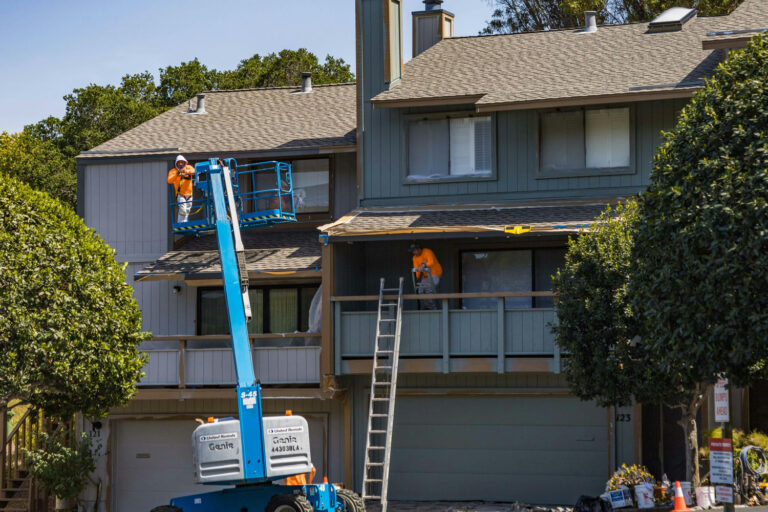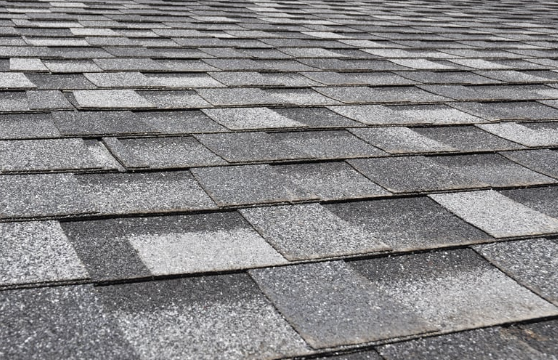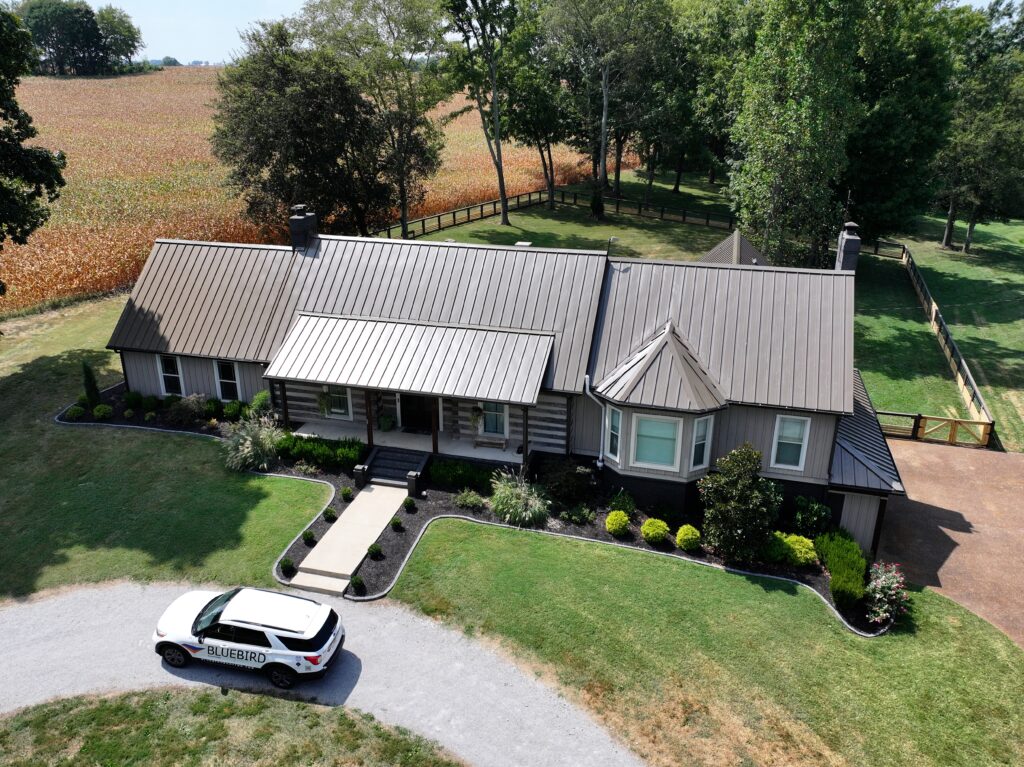10 Signs You Need a New Roof
Roofs can need replacing anywhere from every 12 to 50+ years, depending on the materials used and frequency of maintenance.
Yet, many homeowners are caught off guard when signs of serious wear start to show. Knowing when to replace roof materials is critical if you want to avoid leaks, costly repairs, and major structural damage.
In this article, we’ll walk you through 10 clear warning signs you need a new roof, so you can make the right decision at the right time.
What is the Standard Life of a Roof?
Knowing the standard lifespan of a roof can help you plan ahead and recognize when it might be time for a replacement. According to research from the National Association of Home Builders and the International Association of Certified Home Inspectors, roof lifespans vary widely based on the material and environmental conditions.
For instance:
- Tile, copper, and slate roofs can survive over 50 years with proper care.
- Wood shake roofs last around 30 years.
- Fiber cement shingles usually last about 25 years.
- Asphalt shingle and composition roofs, some of the most common types, have an expected life of about 20 years.
- Solar panels installed on roofs tend to last between 25 to 30 years.
How to Tell if a Roof is in Good Condition
Checking your roof does not have to be complicated. A quick visual inspection can tell you a lot about its current shape. Here is what to look for:
- Shingles should be lying flat, not curling, cracking, or missing.
- Flashing around chimneys, vents, and skylights should be tight and free of rust or damage.
- There should be no signs of leaks, sagging spots, or mold growth inside your attic or on your ceilings.
One of the best ways to stay ahead of costly repairs is to have your roof professionally inspected every one to two years. A trained expert knows exactly how to know when to replace a roof and can catch small issues before they turn into bigger ones.
10 Warning Signs You Need a New Roof
Even a strong roof has its limits. Over time, small problems can add up to bigger ones, leaving your home vulnerable to serious damage.
If you are wondering when to replace roof materials, paying close attention to early warning signs is the best place to start.
Here are 10 clear signals it might be time for a change:
1. Your Roof is Hitting the Retirement Age
Age matters more than many homeowners realize. If your roof is between 20 and 30 years old, it is smart to start planning for a replacement. Even if everything looks fine from the ground, an aging roof can have hidden weaknesses that show up suddenly.
2. Shingles are Curling, Cracking, or Missing
Shingles are your roof’s first line of defense. When they start to curl, crack, or fall off, it is a strong warning that your roof can no longer keep out the elements the way it should.
3. Granules are Collecting in Your Gutters
Finding a pile of granules in your gutters is more than a messy inconvenience. It usually means your shingles are breaking down. Granule loss speeds up roof aging and leaves your home less protected from rain, sun, and storms.
4. You See Light in the Attic
If daylight is passing through the roof boards into your attic, it means water can get in, too. Even small gaps can lead to big problems over time. This is one of the clearest warning signs you need a new roof.
5. Moss, Algae, or Mold are Moving In
When moss, algae, or mold show up, it often means your roof is trapping moisture. Over time, trapped moisture can cause rot and weaken the entire structure.
6. Sagging Spots or Wavy Lines on the Roof
A sagging roofline is not something to ignore. It can mean your roof’s support system is compromised, which could eventually lead to a collapse if left untreated.
7. Rusty Roof Valleys or Flashing Damage
Roof valleys and flashing help direct water away from your home. When they rust or get damaged, water can find its way inside fast, leading to leaks and other costly damage.
8. Water Stains or Mold in the Attic
Seeing water stains or smelling mold in the attic is a major red flag. It usually means water is already getting past your roof’s surface, and action is needed sooner rather than later.
9. Frequent Minor Leaks or Repairs
If you find yourself patching leaks every year or calling for small repairs often, it might be time to think bigger. A string of minor problems is often a sign that the roof as a whole is failing.
10. Storm or Hail Damage
Storms can cause serious harm that is not always obvious at first glance. Hail, strong winds, and heavy rain can crack, loosen, or rip away shingles, leaving your roof vulnerable to future damage.
Is it Better to Repair or Replace a Roof?
Not every roofing problem means you need a full replacement.
Sometimes, a simple repair is enough to extend the life of your roof. If the damage is limited to a small area, like a few missing shingles or a minor flashing issue, a repair can be the more cost-effective choice.
However, if your roof has widespread problems like the ones mentioned above, replacement usually makes more sense. Constantly paying for small repairs can add up quickly, often costing more over time than investing in a new roof upfront.
How Often Should a Roof Be Replaced?
There is no single answer for every home because the timeline depends on your roofing material, the climate where you live, and how well you keep up with maintenance. However, most roofs follow a general replacement cycle.
As mentioned previously:
- Asphalt shingles typically need replacing after 20 to 25 years.
- Wood shake roofs will need replacing after 30 years.
- Metal, tile, and slate roofs can go 50 years or more with proper care.
Keep in mind, even durable roofs should be inspected regularly. Bad weather, falling branches, or even a lack of ventilation can speed up the need for a new roof. Staying alert to small issues can help you plan when to replace roof materials without the surprise of an emergency.
How Do You Know It’s Time to Replace Your Roof?
If your roof is approaching the end of its expected lifespan, showing visible damage like the ten warning signs mentioned above, it is better to act now.
Another warning is if repairs are becoming more frequent or costly. Roofs that need constant fixes are often past the point where spot repairs will help for long.
What is the Best Weather to Replace a Roof?
Warmer temperatures help materials seal properly, and dry conditions lower the risk of rain delays so the most ideal weather for roofing work is usually during late spring, summer, or early fall.
Trying to replace a roof during winter or rainy seasons can lead to problems like slippery surfaces, material issues, and longer installation times. Contractors are often busier during peak seasons, too, so booking early can help you stay on schedule.
So, if you are wondering when is the best time to replace a roof, aim for a window when the weather is mild, dry, and temperatures are steady, ideally between 45°F and 85°F.
Protect Your Home with Bluebird Roofing
If you are seeing any of the warning signs we discussed, now is the time to act. At Bluebird Roofing, we believe you deserve a premium roof installed by a company that treats your home like their own.
With over 5,400 satisfied clients, a 5-star Google rating, and more than 6,000 roofs installed across Middle Tennessee, our reputation speaks for itself.
Schedule your complimentary roof evaluation today. Our expert team will carefully inspect your roof, explain your best options, and guide you every step of the way with professionalism, transparency, and craftsmanship you can trust.
Protect what matters most. Contact Bluebird Roofing now to get started.




